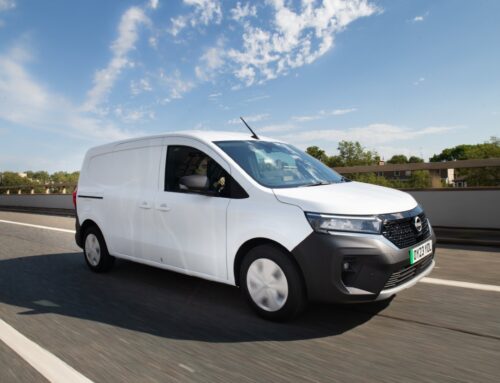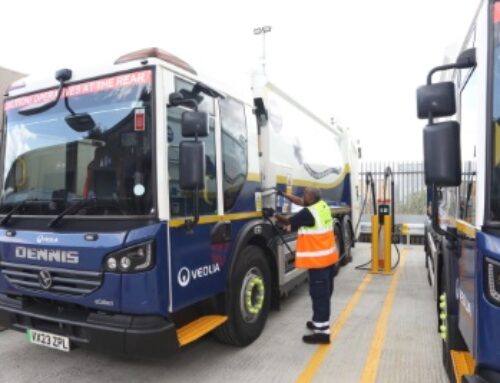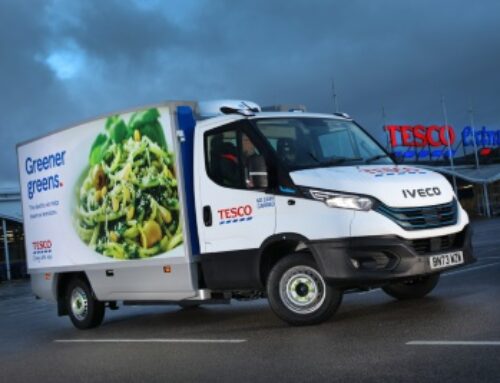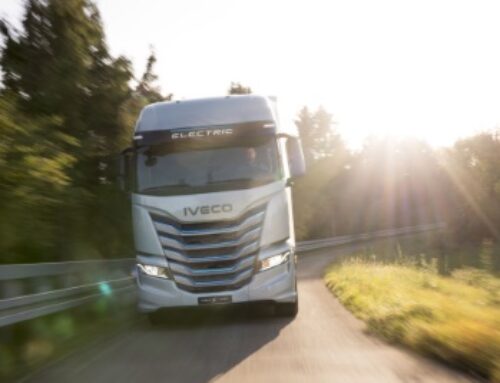Pailton: battery swapping may steer EVs to success
 Pailton Engineering has highlighted the potential benefits for the CV sector of battery swapping technology for electric vehicles (EVs), and the implications for the kinds of componentry used, such as in steering systems.
Pailton Engineering has highlighted the potential benefits for the CV sector of battery swapping technology for electric vehicles (EVs), and the implications for the kinds of componentry used, such as in steering systems.
Pailton supplies steering parts and full steering systems for heavy duty vehicles, including electric trucks and last mile delivery vehicles.
According to Roger Brereton, the company’s head of sales, while previous attempts to make battery swapping technology commercially viable may have failed, the idea has always worked well in theory – and there are now many projects around the world where it is being put into action.
“From a sustainability perspective, battery swapping has considerable appeal,” he said.
“Fast charging degrades the battery at a much faster rate, leading to additional e-waste. With battery swapping, the batteries can be charged more slowly and efficiently and at a time that reduces demand on the grid.
“The charging stations would also offer the potential to assist with grid load balance, as they can operate as stationary storage.”
Roger concedes there are barriers to uptake in the automotive sector.
“Firstly, consumer preferences favour a more traditional model of ownership, a sentiment that is particularly strong in the US market,” he said.
“A major problem is that when a driver swaps a battery, they might be swapping their new battery for one that has seen significantly more use, a fact that weakens the appeal of the swap concept.
“Secondly, the battery in an EV is a major structural element of the car. Some experts therefore argue that a standardised battery pack is unlikely to prove popular with OEMs.
“However, neither of the above factors is an equally significant impediment for the commercial vehicle sector and it is here that industry experts believe the swapping concept will gain traction.”
As fleet managers look for opportunities to convert their vans and trucks to electric, says Roger, battery swapping is emerging as a viable solution, with examples cropping up of successful trial projects all around the world.
“In Australia, Janus Electric is involved in a project converting diesel trucks to electric and installing its standardised electric battery,” he said.
“This battery can be swapped in three minutes and the company has strategically located swapping stations for a trial route between Brisbane and Sydney.”
In the US, San Francisco-based Ample is also finding success in the CV sector, he adds.
“The company has partnered with Electric Last Mile Solutions (ELMS), a Michigan-based company focused on last mile deliveries. The company is offering a commercial EV option that features Ample’s battery technology,” said Roger.
“The time saved by swapping, as opposed to charging, is a key incentive for fleet managers interested in this solution.
“Whereas consumers might often be content leaving their car charging overnight, fleet owners want to keep their vehicles on the road for as long as possible, so battery swapping is a more effective strategy here.
“Although fast charging is growing in sophistication, it is often still very expensive and… less environmentally friendly.
“The technology’s uptake is also being encouraged by the emergence of different business models. If the high initial costs are an obstacle to adoption, companies can opt to lease the batteries instead.
“Both Janus Electric and Ample are offering an Energy-as-a-Service (EaaS) solution, to allow customers to overcome this barrier to entry. Mobility-as-a-Service, where fleet managers forgo vehicle ownership altogether, is also being touted as an alternative business model that may work better in future.”
According to Roger Brereton, the conventional components in the vehicle, such as the steering components, need to be designed and built to withstand the demands these vehicles will face.
“For newly designed last mile delivery vehicles, smaller and lighter components that are specifically designed for vehicle electrification have benefits such as reducing the overall weight of the vehicle,” he said.
“In instances where older vehicles are being converted from diesel to electric, those vehicles that have high quality steering parts are more likely to allow fleet managers to fully realise the potential savings on maintenance that EV conversion can offer, as they last longer on the road.”
He concluded: “Although swapping is still yet to prove itself on a significant scale and will have to compete with fast charging in the e-mobility mix, the need to reduce transport emissions is a problem that requires many solutions.
“There’s every sign that battery swapping will be an important part of that equation for the commercial vehicle sector.”











